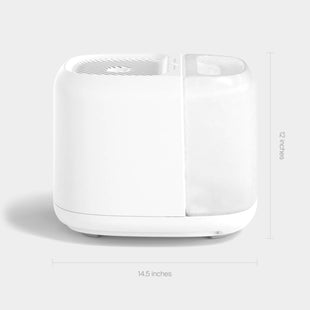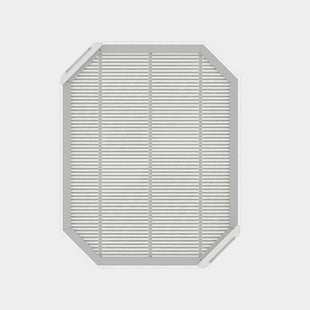Let’s be honest: relative humidity is probably not a term you have spent a whole lot of time pondering over the years… And for good measure (pun intended). Relative humidity, or just plain old humidity, is something we feel, not something we think about or calculate every time we walk out the door.
Relative humidity is actually a term that proves quite useful when monitoring the air quality of your home. When relative humidity levels overflow into excess, we feel the effects on our body and our home. When relative humidity levels drop off into oblivion, we also feel the effects on our body and we eventually observe the effects on our home.
So, what’s the hype about relative humidity? What exactly is it and how do you measure it?
Buckle up, and let’s talk humidity.
What is Relative Humidity?
If you have ever visited the deep south during the summer months or lounged on a beach chair in the tropics, you know humidity. That wet, sticky feeling from your head to your toes can leave scars on even the coolest of cucumbers.
You may also know the feeling of low humidity, though we often just call it “cold.” Remember last winter when you were bundled up in a parka jacket with a scarf wrapped 45 times around your neck like Randy from A Christmas Story? Your lips and nose were cracked, your face was numb, and no amount of body moisturizer felt sufficient for your knees and elbows. That, friend, is low humidity.

There are two types of humidity: absolute humidity and relative humidity. In order to understand relative humidity, you first need to have a clear definition of absolute humidity.
Absolute humidity is the total amount of moisture in the air. According to The National Weather Service, absolute humidity measures “grams of water vapor per cubic meter volume of air.”
Relative humidity, on the other hand, takes temperature into account. Thus, relative humidity is a ratio of absolute humidity to the highest possible absolute humidity. The highest possible absolute humidity is dependent upon temperature; higher temperatures can hold more moisture than lower temperatures.
Using the NSIS as reference, if it is 80 degrees outside and the relative humidity is 0%, then it feels more like 73 degrees. Not bad, right? Add a bit of humidity into the mix and you might feel like you are sitting at the bottom of a volcano. At 80 degrees, with a relative humidity level of 100%, it actually feels like it is 90 degrees.
How to Find Relative Humidity
There are a few ways you can find relative humidity levels both outdoors and in your home.
To gauge the relative humidity levels outdoors is incredibly easy. If you have an iPhone, you can tap on the “Weather” app, which is powered by The Weather Channel. Each day, the application provides projected and actual humidity in terms of a relative humidity percentage. You can also view sunrise and sunset times, the chance of rain and wind speed if you’re into that sort of thing.
When measuring the relative humidity levels of your home, you can use a hygrometer or refer to your smart thermostat humidity reader.
A hygrometer is a device that measures humidity levels of a particular space. You can purchase a hygrometer from most home appliance and home goods stores, or you can find one on Amazon.
Relative Humidity in Your Home
Humidity levels have a major impact on the air quality and overall comfort of your home. Optimal indoor humidity is between 40% and 60% for your home.
When humidity levels fall below 40% or exceed 60%, you will notice the repercussions on your health and your home… Sometimes quickly, and sometimes slowly.
What Happens When Relative Humidity is Too Low?

Humidity levels below 40% can wreak havoc on your body, and destroy the foundation of your home, slowly but surely. Low humidity kind of sneaks up on you, like a crouching tiger. Just as you think you could not get any colder, your hands crack and your lips start to bleed in the corners. Ouch!
Low humidity levels can affect your body in the following ways:
- Increased chances of catching a cold or the flu
- Congestion or runny nose
- Sore throat or cough
- Dry or watery eyes
- Dry, itchy, or inflamed skin
- Exacerbated eczema or psoriasis
- Worsened asthma or allergies
- Dry, flaky scalp
- Dry, cracked lips
- Bloody nose
Low humidity levels affect your home in the following ways:
- Increased static electricity
- Dry, sad-looking houseplants
- Peeling wallpaper
- Warped hardwood floors
- Shrinking windows or doors
- Shrinking wood furniture
What Happens When Relative Humidity is Too High?

Humidity levels in excess also have an impact on your health and the condition of your home. When relative humidity exceeds 60%, your home is at risk for mold and mildew, not to mention an increase in common household allergens.
Running your air conditioner during the summer months can reduce home humidity levels slightly, but it can only do so much. There are many household activities that increase humidity levels like: hot showers, running the dryer, steam from the kitchen, houseplants, and more.
The effects of excess humidity on your health are:
- Sluggishness and fatigue
- Heat rash
- Increased allergy and asthma symptoms
- Overheating
- Dehydration
- Muscle cramping
The effects of excess humidity on your home are:
- Introduction of dust mites
- Introduction of mold and bacteria
- Unpleasant smells throughout the home
- Bubbling paint or peeling wallpaper
- Warped wood floors
- Warped wood furniture
- Water stains
- Increased airborne contaminants
How to Regulate Humidity Levels in Your Home
The goal is to maintain an optimal humidity level between 40% and 60% for maximum health and home benefits. Relative humidity that is too low or too high can be a threat to your health and safety, as we elaborated above.
If your home humidity levels are lower than 40%, you can introduce a humidifier into your space to regulate humidity. A humidifier works by dispersing moisture into the air to increase the humidity of a space.
If your home humidity levels are higher than 60%, you should introduce a dehumidifier. A dehumidifier removes excess humidity from your home by suctioning air from your space, running it over metal coils to condense the moisture into liquid. The air is then fanned back into the room with less moisture, and more comfortability.






























